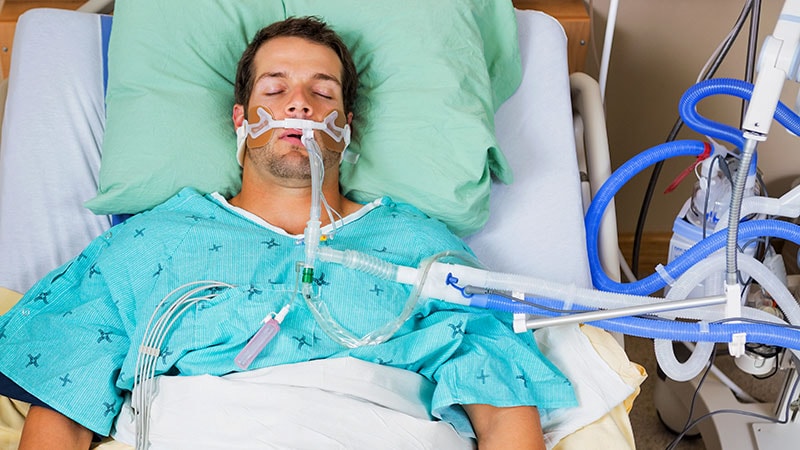Hypercapnia Not Beneficial for OHCA Patients: TAME Study Results
Core Concepts
Maintaining slightly elevated CO2 levels in comatose patients post-out-of-hospital cardiac arrest does not improve outcomes.
Abstract
The TAME study aimed to assess the impact of mild hypercapnia on comatose patients post-resuscitation from out-of-hospital cardiac arrest. The study did not show any improvement in neurologic, functional outcomes, or quality of life at 6 months. However, it was noted that elevated CO2 levels were not associated with worse outcomes. The trial involved 1700 adults with coma who were randomly assigned to receive either mild hypercapnia or normocapnia for 24 hours. Results indicated no significant difference in outcomes between the two groups. Safety concerns regarding hypercapnia were addressed, with no increase in adverse events reported. Further analyses are planned to explore potential prognostic markers and individual patient responses to hypercapnia. The study also established a network for future trials in this patient population.
Upping CO2 Does Not Benefit OHCA Patients: TAME
Stats
"The primary outcome occurred in 43.5% in the mild hypercapnia group and in 44.6% in the normocapnia group."
"By 6 months, 48.2% of those in the mild hypercapnia group and 45.9% in the normocapnia group had died."
"In the mild hypercapnia group, 53.4% had a poor functional outcome, compared with 51.3% in the normocapnia group."
Quotes
"Raising CO2 levels does improve overall delivery of oxygen to the brain, but this might not have occurred in the right areas."
"These patients are managed differently and often have probes in their brain to measure the response to CO2, so more of a precision medicine approach is possible."
Key Insights Distilled From
by Sue Hughes at www.medscape.com 06-19-2023
https://www.medscape.com/viewarticle/993372
Deeper Inquiries
How might individual patient characteristics influence the response to hypercapnia post-cardiac arrest?
Individual patient characteristics such as age, underlying health conditions, severity of the cardiac arrest, and overall neurological status can significantly influence the response to hypercapnia post-cardiac arrest. For example, older patients or those with pre-existing neurological conditions may have different responses to hypercapnia compared to younger, healthier individuals. Additionally, the timing of the intervention, the duration of hypercapnia exposure, and the specific mechanisms of brain injury post-cardiac arrest can also play a role in determining how patients respond to elevated CO2 levels. Understanding these individual variations is crucial in tailoring treatment strategies for better outcomes in critical care settings.
What are the implications of the TAME study results for future research on hypercapnia in critical care settings?
The TAME study results have important implications for future research on hypercapnia in critical care settings. The findings suggest that maintaining slightly elevated CO2 levels post-cardiac arrest may not improve neurologic outcomes or quality of life in comatose patients. This challenges previous assumptions and highlights the need for more rigorous studies to validate the efficacy of hypercapnia as a therapeutic intervention. Future research should focus on identifying specific patient populations that may benefit from hypercapnia, exploring alternative strategies to optimize cerebral blood flow, and investigating potential biomarkers that can predict individual responses to hypercapnia. By building on the findings of the TAME study, future research can refine treatment approaches and improve outcomes for patients in critical care settings.
How can precision medicine approaches be integrated into the management of patients with traumatic brain injury?
Precision medicine approaches can be integrated into the management of patients with traumatic brain injury by utilizing advanced technologies and personalized treatment strategies. In the context of hypercapnia post-traumatic brain injury, precision medicine can involve monitoring cerebral oxygenation levels, using brain probes to measure the response to CO2, and tailoring interventions based on individual patient characteristics and responses. By incorporating genetic, molecular, and imaging data into treatment decisions, healthcare providers can optimize outcomes for patients with traumatic brain injury. Precision medicine allows for a more targeted and individualized approach to patient care, leading to better prognostic assessments, treatment efficacy, and overall patient outcomes in critical care settings.
0
More on Medical Research
